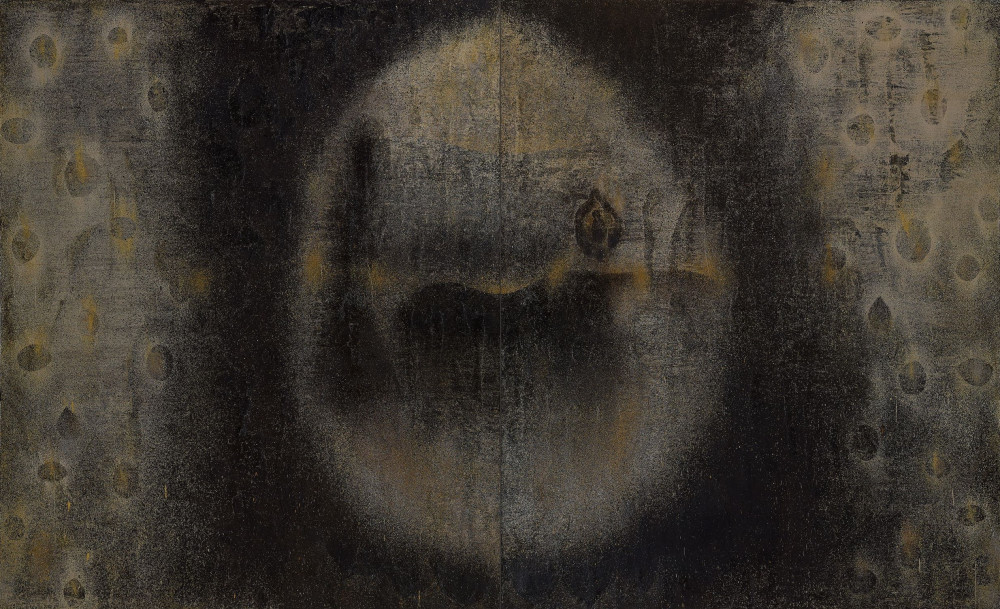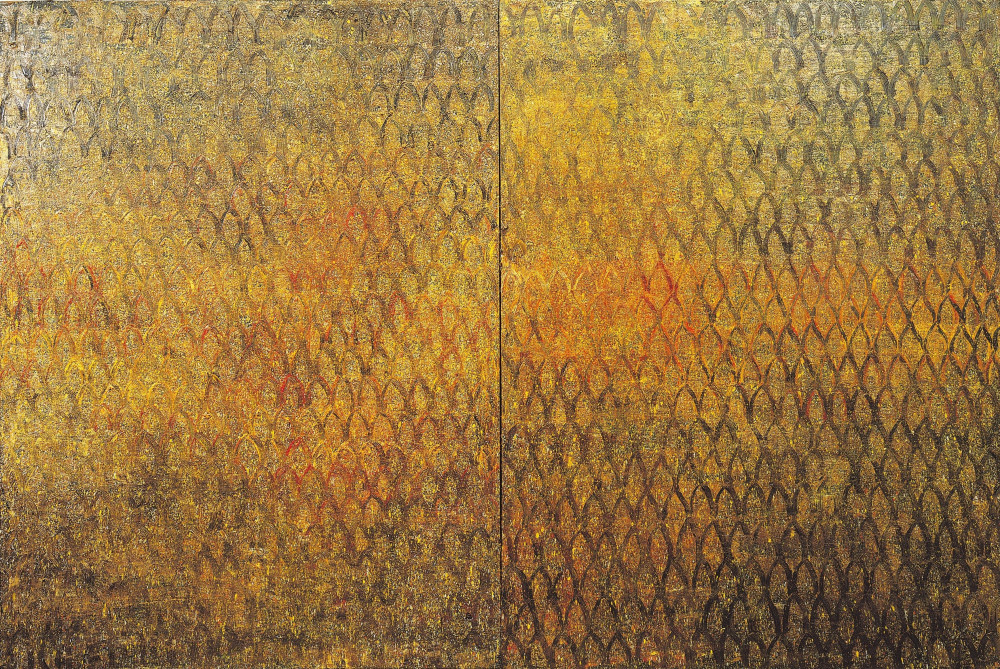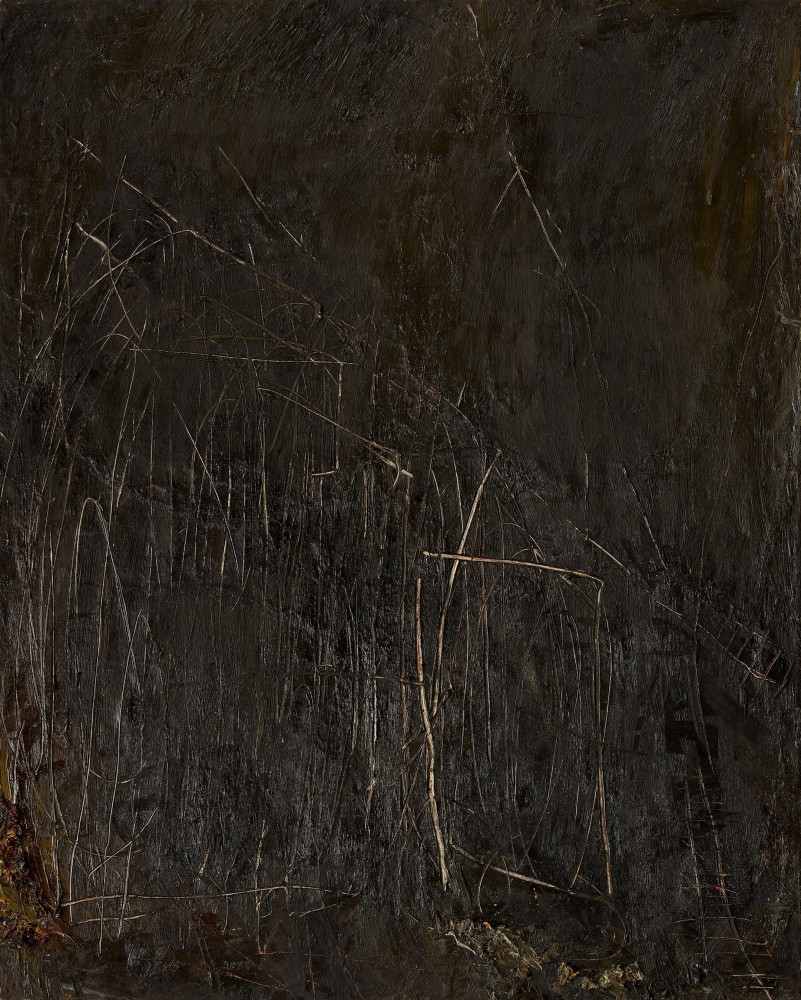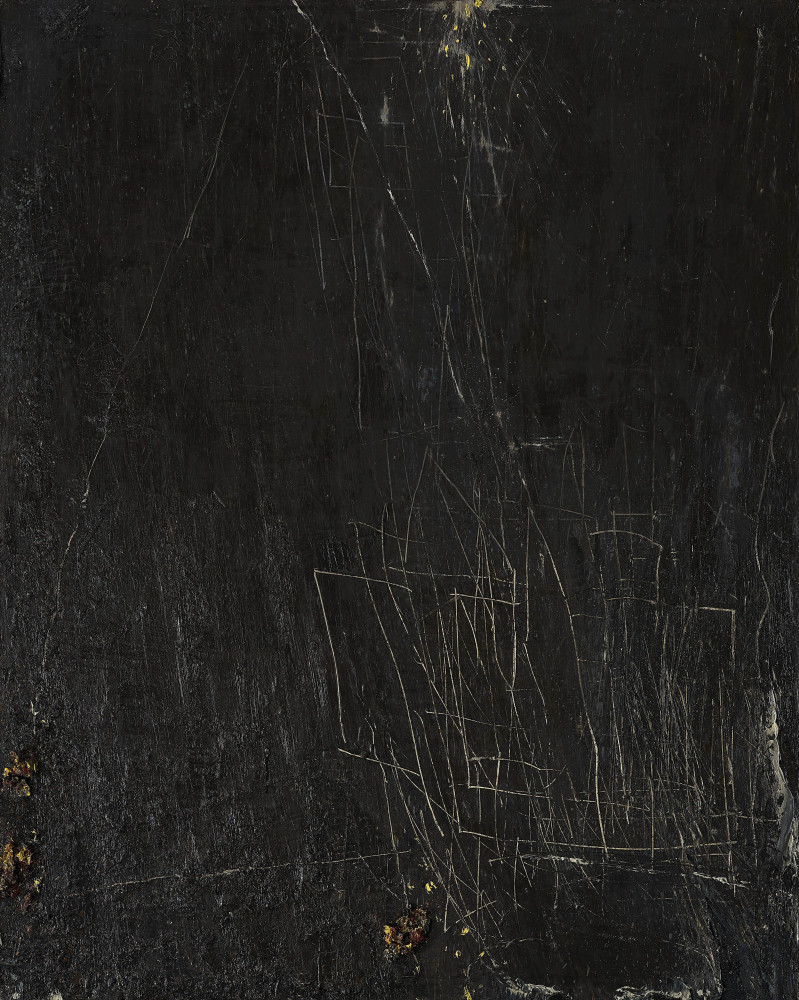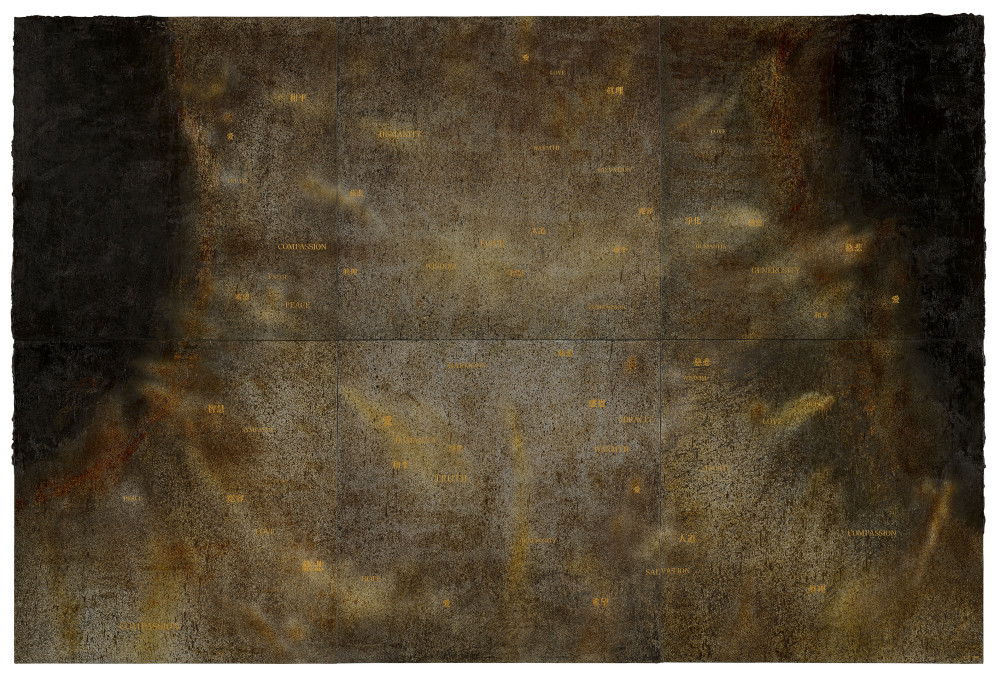After living abroad for thirty years, Chiang returned to Taiwan in 1997. The familiar yet renewed landscape deeply inspired him, fueling a new wave of creativity. Embracing his homeland, he shed the weight of the past and created works that honored Taiwan.
Blending Western abstraction with Eastern cultural elements, Chiang developed a unique style. His "Hundred Year Temple" and "Home" series garnered wide acclaim, followed by "Imagination of Lotus" and "Meditation on Eternity," where he transcended local themes to forge a profound spiritual world. These works' universal aesthetic solidified his place in Taiwan's art scene.
Hundred Year Temple
In 1995, Chiang returned to Taiwan to care for his ailing father, unexpectedly finding profound inspiration; he even considered changing his name and starting anew.
During visits to Longshan and Baoan Temples in Taipei, Chiang was captivated by the thick incense, flickering candlelight, and vibrant crowds. This experience gave rise to the "Hundred Year Temple" series, where he conveyed the solemnity of religion through abstract compositions and expressive brushstrokes. Elements like towering dragon pillars, swirling incense, bronze firelight, and Buddha altars were rendered with a blend of Western techniques and Taiwanese cultural influences, evolving into a hallmark of his work
Home
When Chiang left Taiwan in his early twenties, he was captivated by the allure of Paris and gave little thought to the familiar surroundings of his homeland. After spending thirty years abroad, he found himself deeply moved by the scenes of local street, suspension bridges, and lights and dragon pillars in temples. This newfound sense of nostalgia became a rich source of inspiration.
Imagination of Lotus
Imagination of Lotus" marked Chiang's first use of bright colors. The earliest piece, "Imagination of Lotus 91-02," was created in 1991 for his daughter. Featuring quiet lotus leaves and a vibrant red stem on a pale pink background, it symbolizes youthful vitality and a father's tender love.
Following the "Hundred Year Temple" series, Chiang continued exploring similar themes. "Imagination of Lotus 99-10," created after the 921 Earthquake, reflects purification through suffering, elevating the lotus as a symbol of purity and beauty with vibrant colors and a blend of ancient and modern influences.
The Heart Sutra
In 2003, Chiang exhibited his "Heart Sutra" series. Although he is not a Buddhist, he is particularly fond of the simplicity and poetic nature of the Heart Sutra. The 260-character scripture repeatedly captivates him, whether in Chinese or English, from an aesthetic perspective.
Continuing his concern for the aftermath of the 921 Earthquake, Chiang began inscribing the Heart Sutra on his canvases, meticulously forming each character with gold paint. The act of creation itself took on a ritualistic significance. The Heart Sutra works from this period are extremely minimalist, evoking a sense of tranquility and peace.
Meditation on Eternity
In 2001, Chiang experimented extensively, moving beyond the candlelight and lotus lamps of the "Hundred Year Temple" series to create ethereal depictions of the cosmic starry sky. He abandoned his usual color palette in favor of a pure and transparent simplicity, quietly guiding viewers into a subtle spiritual realm. The universe may be the source of Chiang's energy, a force that allows him to find liberation and transcendence, with interstellar clouds drifting across his canvases. While the external appearance of his work at this time differed from his earlier pieces, the ultimate pursuit of his art remained unchanged over the decades.
